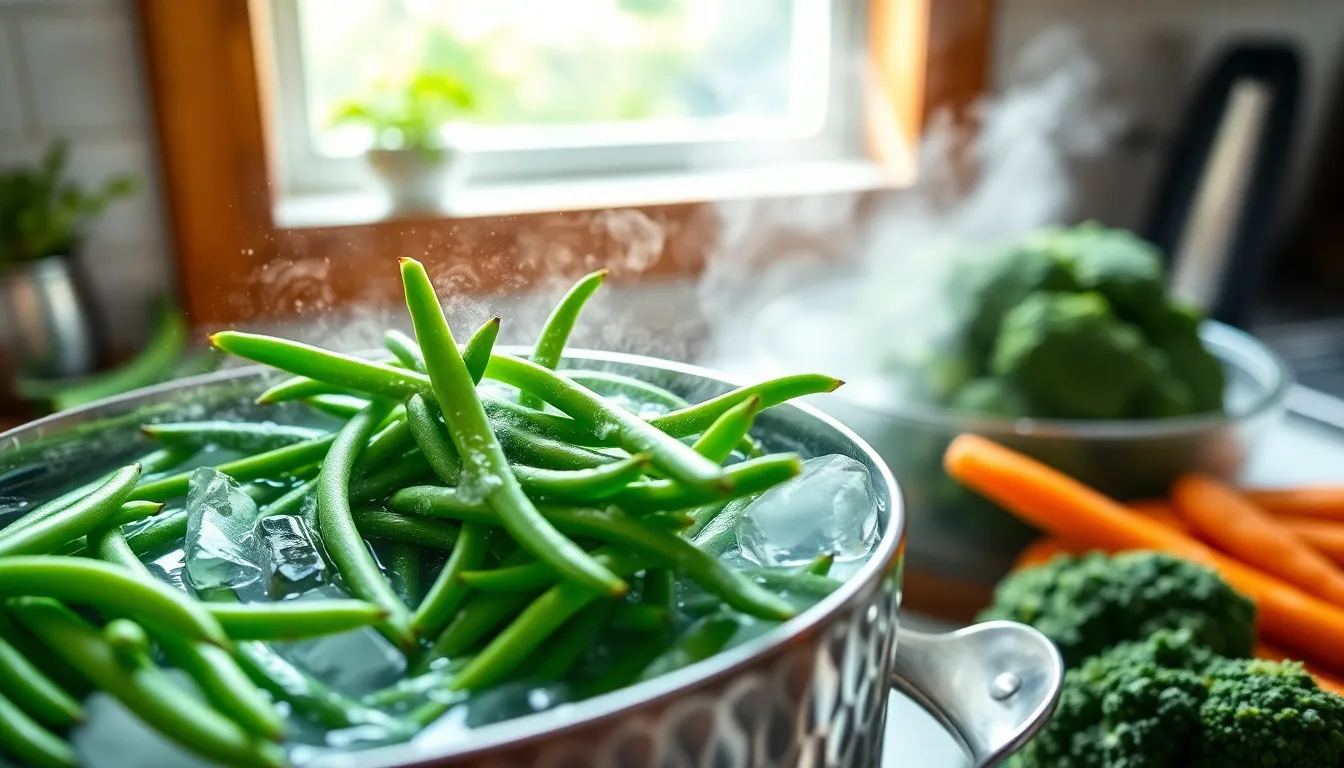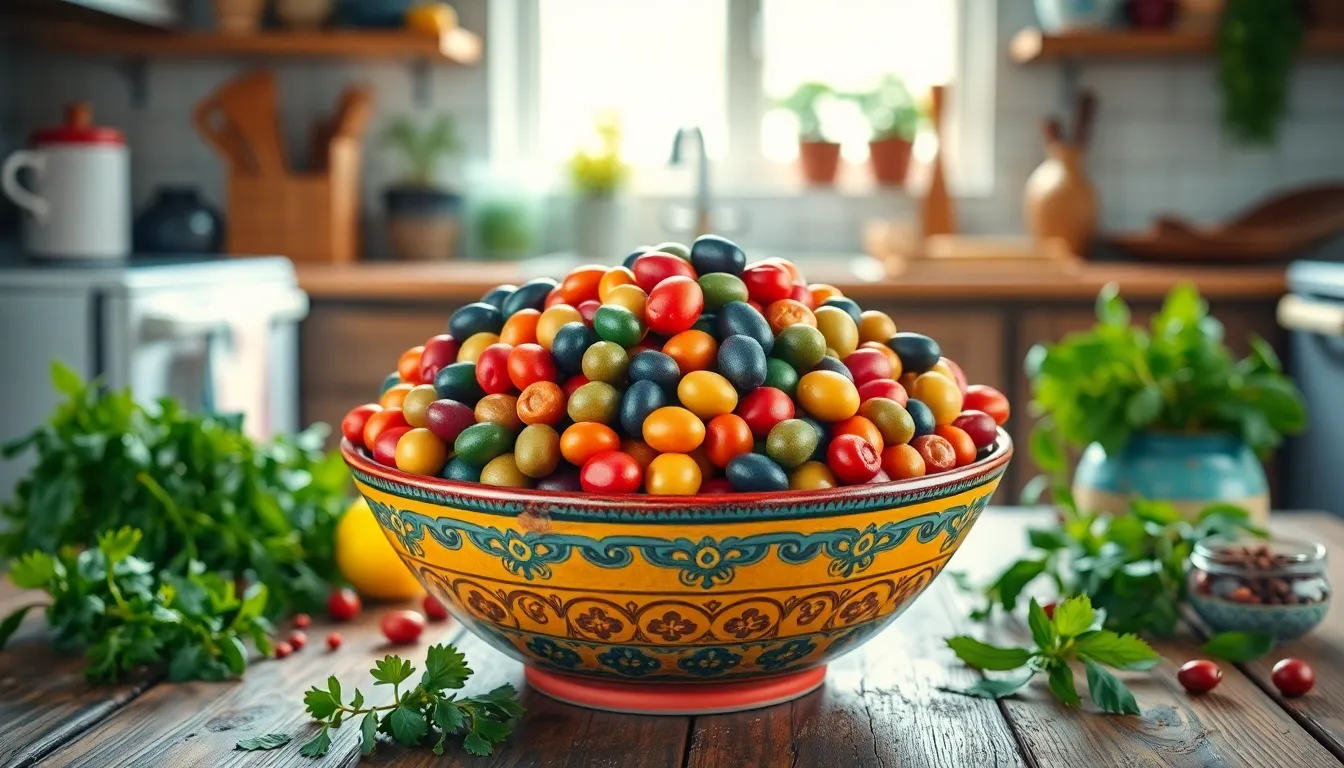Blanching is a culinary technique that can elevate the flavor and texture of various vegetables and fruits. By briefly boiling produce and then plunging it into ice water, this method locks in vibrant colors and nutrients while softening the texture, making it easier to enjoy. It’s a fundamental skill in any kitchen that not only prepares ingredients for cooking but also enhances their visual appeal.
This method is often used in meal prep, preserving, and even in creating stunning dishes. Whether it’s to maintain the crunch of green beans or to prepare tomatoes for peeling, blanching offers a simple yet effective way to improve the overall quality of food. Understanding the ins and outs of blanching can empower anyone to take their cooking to the next level.
Table of Contents
ToggleWhat Is Blanching?
Blanching is a culinary process that involves briefly boiling vegetables or fruits before plunging them into ice water. This technique preserves color, flavor, and nutrients while improving texture.
Definition of Blanching
Blanching refers to the method of cooking food quickly in boiling water. It usually lasts from 30 seconds to a few minutes, depending on the type of produce. After boiling, the food is swiftly cooled in ice water to halt the cooking process. This two-step technique enhances taste and maintains the visual appeal of the food.
The Science Behind Blanching
Blanching utilizes heat to denature enzymes that cause spoilage and nutrient loss. The boiling water penetrates the outer layer of the produce, triggering important chemical reactions. Cooling the produce immediately in ice water halts these reactions, preserving the color, texture, and nutritional value. This method also makes peeling fruits and vegetables, like tomatoes and peaches, easier and less time-consuming.
Benefits of Blanching
Blanching offers several key advantages for enhancing the quality of fruits and vegetables. These benefits include improved flavor, texture, and nutrient preservation.
Enhancing Flavor and Texture
Blanching enhances the flavor and texture of vegetables and fruits. Boiling briefly activates natural sugars, creating a sweeter taste profile while softening fibrous textures. This process improves mouthfeel, making produce more enjoyable. For instance, blanching green beans renders them tender yet crisp, accentuating their freshness in dishes.
Preserving Nutrients
Blanching effectively preserves vital nutrients. Quick exposure to boiling water deactivates enzymes that can lead to nutrient degradation over time. Research indicates that blanching can retain up to 90% of certain vitamins, ensuring that color and nutritional benefits remain intact. For example, blanching broccoli can help maintain vitamins C and K, making it a healthier addition to meals.
Techniques for Blanching
Blanching techniques vary, each offering unique advantages for preserving the quality of produce. Understanding these methods can enhance blanching effectiveness in culinary practices.
Water Blanching
Water blanching involves boiling water at a rolling boil. Vegetables or fruits are submerged for a specific time, usually 30 seconds to 5 minutes, depending on the type and size of the produce. After boiling, quick cooling in ice water immediately halts the cooking process. This method effectively retains color, flavor, and nutrients. For instance, vegetables like broccoli require 3 minutes in boiling water to achieve optimal texture before plunging into ice water.
Steam Blanching
Steam blanching uses steam rather than boiling water to cook vegetables or fruits. Produce is placed in a steamer basket over boiling water, allowing steam to circulate around it. This method typically requires 1 to 2 minutes longer than water blanching. Steam blanching retains flavor and nutrients efficiently, as the produce doesn’t come into direct contact with water. For example, asparagus takes about 4 minutes in steam, enhancing its vibrant color and crispness.
Microwave Blanching
Microwave blanching is a quick and convenient method, using a microwave-safe container with a small amount of water. Produce should be arranged in a single layer and microwaved for 1 to 4 minutes, depending on the type and quantity. It’s essential to cover the container to trap steam effectively. This method is effective for small batches and ensures nutrient retention while requiring minimal cleanup. For example, microwave blanching cauliflower florets takes about 2 minutes, producing tender yet crisp results.
Common Foods Suitable for Blanching
Blanching effectively enhances the quality of various vegetables and fruits. This technique suits many types of produce, ensuring optimal flavor, texture, and nutrient retention.
Vegetables
Blanching works well with numerous vegetables, including:
- Green Beans: Boiling for 2-3 minutes preserves their bright color and crisp texture.
- Broccoli: A quick 2-minute blanch stops enzymatic action and retains up to 90% of vitamin C.
- Carrots: Boiling for 3-5 minutes softens texture while keeping nutrients intact.
- Peas: A 1-2 minute boil locks in sweetness and vibrant green color.
- Asparagus: Blanching for 2-4 minutes enhances tenderness, ideal for salads.
Fruits
- Tomatoes: Boiling for 30-60 seconds simplifies peeling while retaining juiciness.
- Peaches: A brief boil of 30-60 seconds improves peeling and maintains flavor.
- Plums: Blanching for 1-2 minutes enhances flavor and facilitates peeling for desserts.
- Apricots: A quick 30-60 second boil concentrates flavor and makes processing easier.
- Cherries: Blanching for 1-2 minutes helps maintain color and firmness during preservation.
Blanching is a powerful technique that transforms the way fruits and vegetables are prepared. By enhancing flavor and texture while preserving vital nutrients, it plays a crucial role in elevating culinary experiences. Whether for meal prep or preserving produce, mastering blanching can make a significant difference in the quality of dishes.
With various methods available, cooks can choose the one that best suits their needs and preferences. Embracing this skill not only simplifies the cooking process but also ensures that every bite is delicious and nutritious. Incorporating blanching into regular cooking routines is a smart choice for anyone looking to improve their kitchen game.




